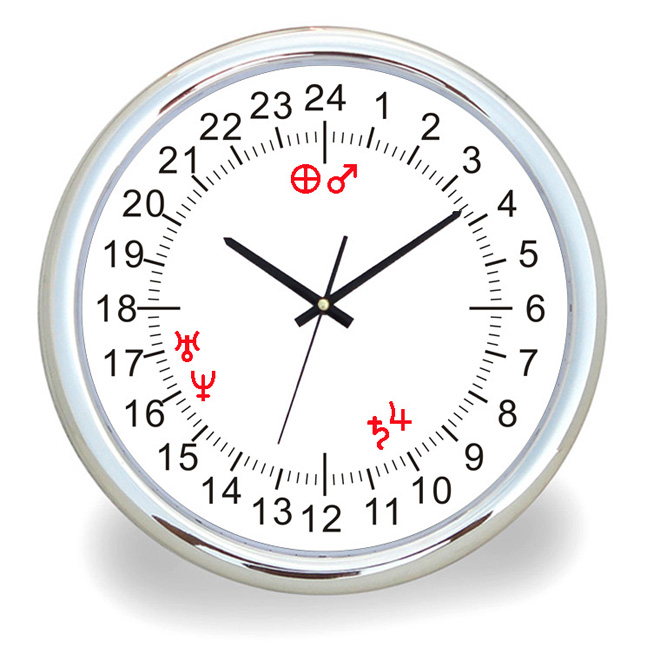The Bunker experiment in 1966+ revealed that our circadian(daily rhythm) is generally longer than 24 hours, usually 25, and that we may have several rhythms
depending on our environment. This is why many of us tend to go to bed later the next day, or want to wake up later the next morning. Artificial lighting in our modern
world has been suggested for this variance, or does it go deeper?
This author believes the periods of the heavenly bodies has everything to do with our bodies' rhythms. Earth's day/night cycle, for example, averages 23 hours 56 minutes
and 4 seconds, or just under one day, yet experiments have revealed that our true inner clock is better suited to the Mars rythm of 24 hours 39 minutes and 35 seconds. Does
this mean that we may have been Martians before Earthlings, or that our creator gods were from Mars?
Here is a list of the circadian(rotational) periods of the different planets in our system, from fastest to slowest, according to astronomy...
Ceres 09 hrs 04 min Jupiter 09 hrs 55 min Saturn 10 hrs 33 min Neptune 16 hrs 06 min Uranus 17 hrs 14 min Makemake 22 hrs 49 min Earth 23 hrs 56 min Mars 24 hrs 39 min Eris 25 hrs 54 min Pluto 06 days 09 hrs 17 min Sun 25 days 9hrs 07 min Mercury 58.65 days Venus 243.025 days As you can see, Haumea, the football shaped dwarf planet is the fastest at almost 4 hours, followed by Ceres, Jupiter, and Saturn at 9 to 10 and a half hours, and Neptune at 16 hours. Makemake, Earth, Mars, and Eris follow at 24 to 26 hours, and then Pluto at 6 days, the Sun at 25 days, Mercury at 58 days, and Venus at a whopping 243 days! Most of these bodies have a rhythym of one day or less, but Pluto, Sun, Mercury, and especially Venus are much longer. Pluto is no surprise given its rulership over Scorpio, a sign that works slowly and secretly, nor is Venus(Taurus) who is the slowest of all. Both are fixed signs as is the Sun(Leo) which also rotates slowly. Too bad Uranus(ruling fixed Aquarius) is not also part of this group, but its distant 84 year orbit makes up for it. The real surprise is Mercury, whose slow 58 day rhythm suggests a Virgo rulership, but its quick 88 day orbit around the Sun supports Gemini. Also note that the long term outer planets from Jupiter to Eris are linked to the last six signs; Jupiter to Sag, Saturn to Cap, Uranus to Aqu, Neptune to Pisces Pluto to Scorpio, and Eris to Libra. This makes sense when you consider that these planets/signs have collective or universal influence, yet their circadian or rotational cycles, with perhaps the exception of Pluto/Scorpio, are fast enough to support secondary rulership. The inner planets from Sun to Mars, on the other hand, have quick orbits but slow rotational periods also accomodating secondary rulership. Mars ruling Aries may have a quick orbit and rotation but becomes Scorpio-like when retrograde. In this way, both the inner and outer planets achieve a kind of vibrational balance . Your own personal circadian rhythms may be strongly linked to the planets you are most closely in tune with via rulership. The fact that each of us has all of the planets working us indicate that we can adapt to any or all of these rhythms and more, depending on our location or circumstance.
|
